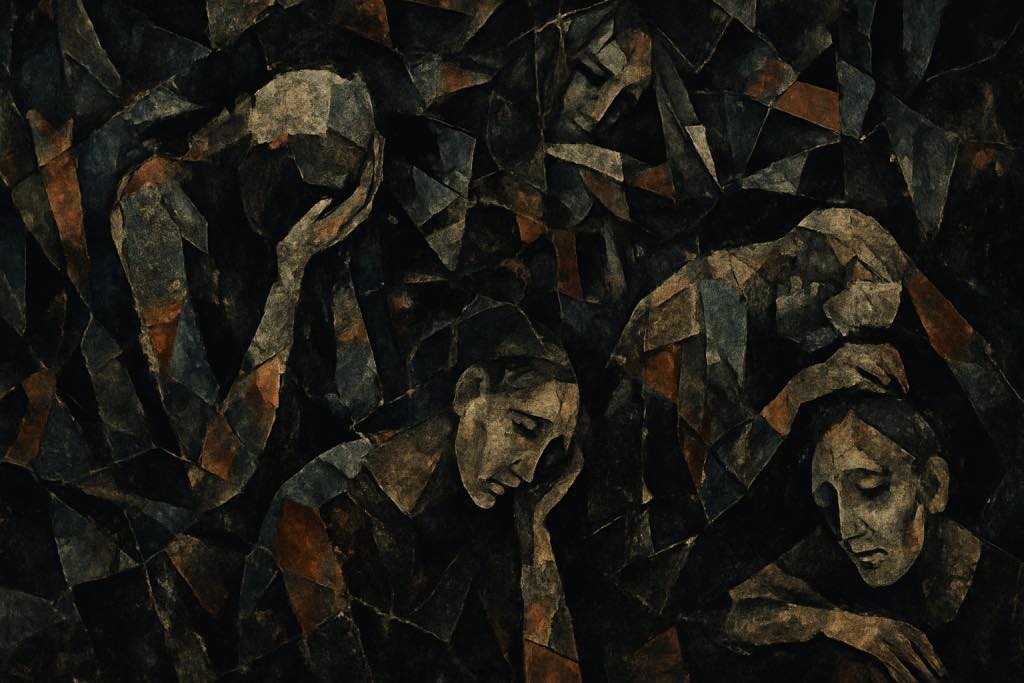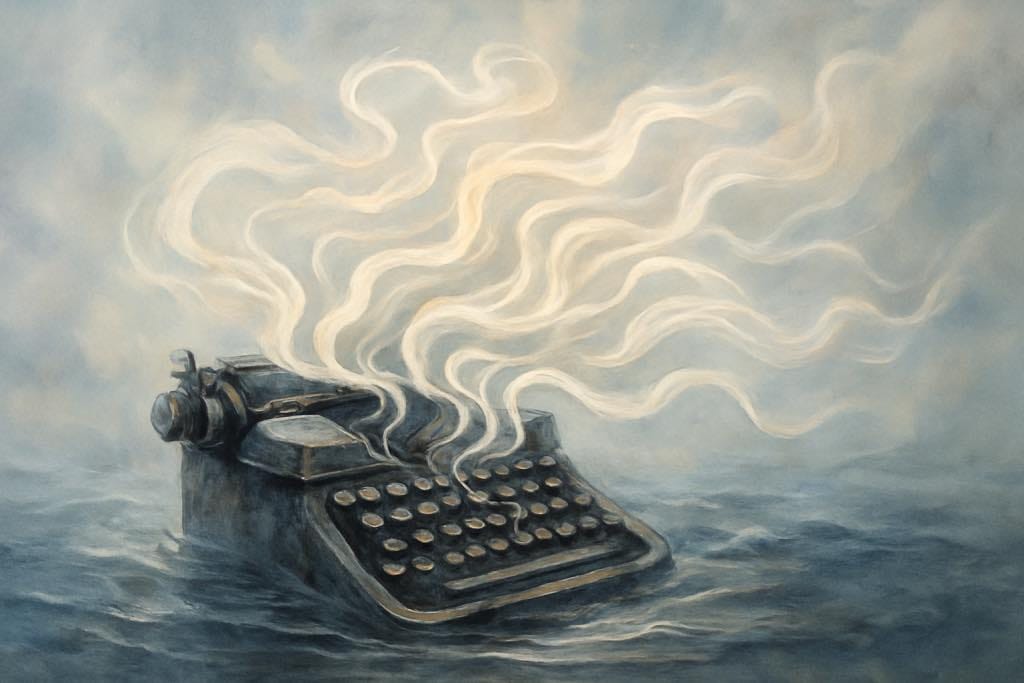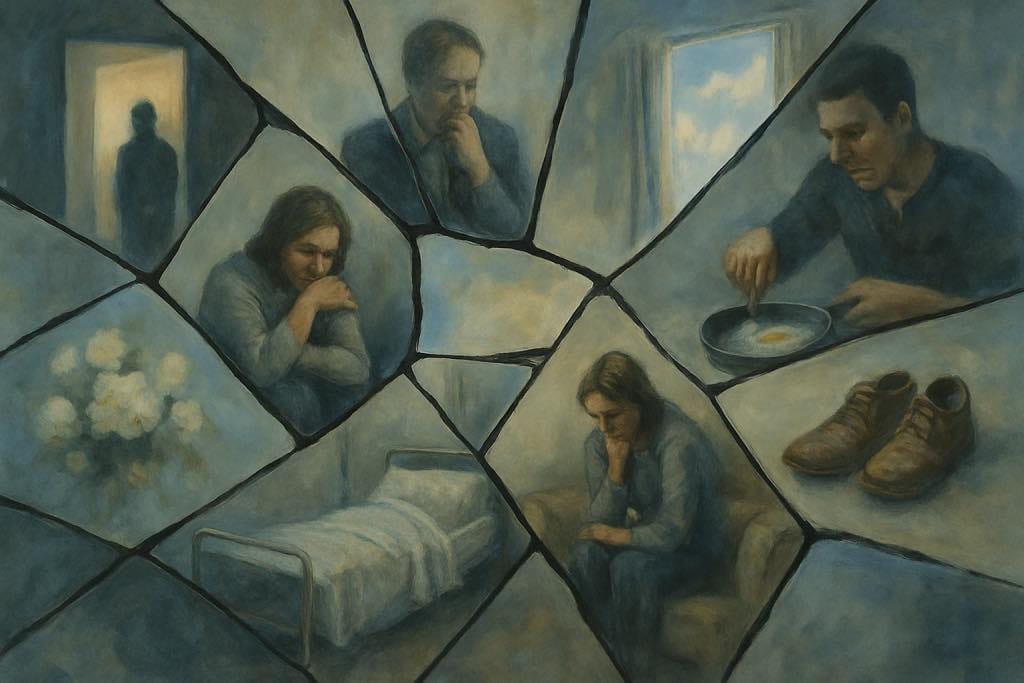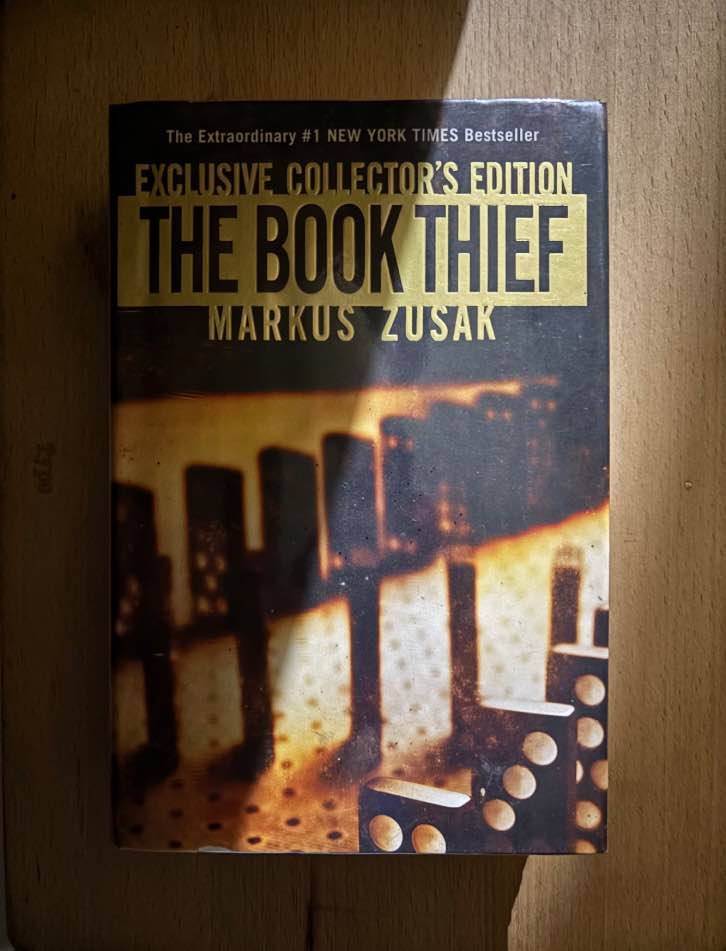- The Year of Magical Thinking by Joan Didion: A Deep Literary Analysis
- Why Joan Didion’s Prose Style Works in The Year of Magical Thinking
- Grief, Memory, and Magical Thinking: Themes in Didion’s Work
- 8 Striking Quotes from The Year of Magical Thinking (And What They Reveal)
- Books Like The Year of Magical Thinking: Grief Memoirs That Go Deeper
- What Didion Doesn’t Say: The Historical Context Behind The Year of Magical Thinking
Joan Didion’s The Year of Magical Thinking (2005) is often classified as a memoir, but to call it simply a memoir is to flatten a work that reshapes the very form of personal narrative. Before this book, Didion had already established herself as a precision stylist, recognized for her cool detachment, psychological insight, and sharp journalistic control. But this book is something else entirely. It marked a shift in the literary memoir, expanding it beyond recollection into a mode of writing that mirrors the psychological or emotional complexity of lived experience.
But Didion does not sentimentalize. She dissects. This book is not just an account of grief but an inquiry into how language fails us when we are most in need of it. It’s a prose that obeys grief’s rhythm, not narrative convention. Didion wrote the book after the sudden death of her husband, John Gregory Dunne, while their daughter, Quintana Roo, was critically ill. It is an unflinching attempt to capture the mental disarray that follows profound loss.
This article offers a comprehensive analysis of The Year of Magical Thinking as a literary work, not only in content, but also in structure, style, and cultural position. We will examine how Didion uses syntax and fragmentation to mirror psychological rupture and explore how themes of magical thinking, memory, and denial interact in recursive loops. We’ll also link to supporting articles that examine her prose, dissect her use of language, unpack her most piercing lines, and trace the book’s resonance across modern writing styles on grief.
Form as Grief: How Structure Reflects Psychological Breakdown

What distinguishes this work is not just its subject, but how it embodies the fractured experience of it. Didion uses repetition, temporal disruption, and linguistic precision to simulate the disorder of mourning. The book’s structure mirrors the unpredictability of thought; she circles back, contradicts herself, replays events, and redacts memories. It refuses the luxury of tidy closure and instead offers the reader an exposed consciousness, struggling to impose meaning while simultaneously resisting it.
The moment of John’s death, for instance, recurs throughout the book. Didion returns to it obsessively, not to analyze but because her mind compulsively replays it. The suddenness and unrehearsed collapse of a domestic routine (“You sit down to dinner and life as you know it ends”) remains fixed, resisting narrative absorption. She does not seek to explain why it happened, only to capture how impossible it feels that it did.
This refusal to follow a linear arc sharply distinguishes the book from conventional memoirs. Where many grief narratives build toward healing, reconciliation, or philosophical acceptance, Didion constructs a personal account that deliberately avoids closure. She does not emerge transformed because the writing remains trapped in the cognitive pattern of grief: doubling back, resisting finality while disrupting any clean structure.
The book’s structure does not simply function as a container for grief; it is grief as it behaves in real time—a mirror of Didion’s mind under duress. Time collapses inward while past and present blur. She describes events that happened weeks apart in adjacent sentences, then interrupts herself with medical records, quotations, and annotations. Just as grief confuses chronology and ruptures memory, the book avoids traditional literary structures and instead focuses on tracing back a story that ruptures linearity.
Didion’s Language and Prose Style

Didion’s prose is often described as spare, but in The Year of Magical Thinking, it is more than that—it is clinically exacting. Her sentences are stripped of ornament not for effect, but because anything else would feel dishonest. Because of this, the tone of the book has often been mistaken for detachment.
But what Didion accomplishes in this book is not simply coldness. Even at her most devastated, her syntax remains composed. The declarative sentences come one after another, as if she is testing the strength of fact itself. “I remember thinking that I needed to discuss this with John,” she writes. “There was nothing I did not discuss with John.” The repetition is childlike in its rhythm and obsessive in its insistence. She is not building an argument but bracing against the collapse of comprehension.
Her control over voice is all the more startling given the subject matter. The book contains almost no metaphors. Her vocabulary avoids sentiment as she writes in a tone closer to report than confession. When she describes her husband’s sudden death, she does not linger in emotion but instead gives the details: they sit down to dinner; she turned her head; he fell. The horror lies in the understatement; by withholding expression, she forces the reader into the psychological gap where grief operates.
As repetition becomes a defining characteristic, phrases recur—“the ordinary instant,” “the night he died,” “I needed to discuss this with John”—as though the act of writing cannot progress without re-encountering what has already happened. This is not redundancy but the very essence of the book’s architecture, wherein these repeated lines function like refrains in a poem, anchoring the text in emotional loops that mirror the interior experience of loss.
For a focused breakdown of how Didion uses repetition and sentence rhythm to mimic cognitive patterns, see: Why Joan Didion’s Prose Style Works in The Year of Magical Thinking.
Magical Thinking, Memory, and Denial: Thematic Refractions

Didion does not grieve conventionally—she grieves by thinking. But the thinking she describes is not contemplative in the philosophical sense; it is magical in its refusal to surrender to fact. She documents, with exacting detail, the rituals that attempt to suspend reality: she cannot part with her husband’s shoes because he might return; she combs through medical records not to understand what happened, but to discover some overlooked version where he survives. Her grief is not chaotic, but obsessive. It is a logic so airtight it begins to collapse on itself. She knows he is dead, and yet she cannot believe it. The phrase magical thinking is not metaphorical—it is the clinical term for the state she inhabits.
In this logic, memory is not a solace but a trap. She circles the past without destination, caught in loops that repeat but do not resolve. Moments return compulsively—the dinner table, the fall, the ambulance, the hospital—not because they offer insight, but because they remain incomplete. Memory deceives as much as it recalls; it alters, contradicts, corrects. Didion recounts earlier statements only to revise them later. The mind, she suggests, is not a witness but an editor—selective, unstable, and always in flux.
Denial in this book is not a passing stage but a condition that underwrites the entire structure. Her grief does not erupt in breakdowns or catharsis—it takes the form of contradiction. “I knew he was dead,” she writes, “but I didn’t believe it.” This is not irony. It is the core of her narration. She performs the motions of understanding—research, writing, medical inquiry—but comprehension never settles. The thinking appears logical, even lucid, yet it persistently evades finality. This is what gives the prose its tension: an argument that cannot convince its own author.
These themes do not stand apart but refract through one another. Magical thinking distorts memory; memory undermines reality; denial gives the entire account its rhythm. What Didion renders is not the experience of grief as feeling, but its architecture: circular, compulsive, intellectually charged, and resistant to closure.
For a full thematic exploration, including connections to Didion’s broader body of work, see: Grief, Memory, and Magical Thinking in Didion’s Work.
Grief in Fragments: A Close Look at Key Quotes

Some of Didion’s most striking lines are not elevated pronouncements. They arrive quietly, almost unguarded. But their weight accumulates—line by line, image by image—until the page becomes an emotional pressure point. These moments are not conclusions but fragments that the mind revisits when narrative fails. Each sentence becomes a structural anchor—something the book builds on and circles back to.
Sentences That Distill Loss
“Life changes fast. Life changes in the instant. You sit down to dinner and life as you know it ends.”
The opening line of the book delivers impact without offering a ramp or introduction. The rhythm of the first two sentences—the repetition and clipped phrasing—enacts the very disorientation Didion is about to explore. Then, she turns sharply: a dinner table, the most banal of settings. That last line grounds the abstraction in real life, revealing the instability of everything we trust as stable.
“The ordinary instant.”
A phrase so stripped down to its core it could be overlooked, but this is Didion’s thesis. Death doesn’t always arrive with warning but disrupts an otherwise unremarkable moment, and in doing so, permanently alters our understanding of time. In a book that repeatedly breaks linearity, this phrase names the illusion it’s responding to: that anything about life is safe or predictable.
Quiet Surrealism, Reluctant Belief
“I needed to be alone so that he could come back.”
This is the moment when Didion names her magical thinking, with the line hovering between clarity and hallucination. The syntax is measured, yet the logic is fantastical. This is not denial in its loudest form, nor is it outright refusal. It’s more complicated: Didion lets the irrational coexist with her voice, refusing to tidy it away with explanation.
“I knew he was dead. I also believed that if he was dead it was because I had failed to get him to the hospital in time.”
This sentence pairs fact with illusion in one breath. It captures the psychic contradiction of grief: knowledge and belief diverge, and guilt becomes a coping mechanism. Didion knows she is not responsible, but responsibility offers a kind of order. The syntax of the sentence folds in on itself: the cause is illogical, but the feeling is precise; knowledge becomes subordinate to belief. What matters is not what’s real, but what can be controlled.
For a broader analysis of Didion’s most resonant lines and their function across the memoir, see: 8 Striking Quotes from The Year of Magical Thinking.
Cultural and Historical Context

Grief in the Early 21st Century
When The Year of Magical Thinking was published in 2005, the literary world was not short of memoirs. What it lacked, however, were memoirs of grief that resisted resolution. The post-9/11 cultural moment was saturated with language of healing, closure, and resilience—terms that suggest narrative completeness. Didion offered none of it.
Her book landed in a public atmosphere increasingly uncomfortable with ambiguity. Popular nonfiction at the time often followed a predictable arc: trauma, crisis, recovery, redemption. Didion broke that model. She presented grief not as a singular event to be overcome, but as a state of suspended comprehension. Readers were not guided toward catharsis; instead, they were asked to sit inside uncertainty.
This resistance to narrative closure gave the book its cultural weight. It felt honest at a time when honesty was often filtered through the logic of self-help mechanisms. Didion’s refusal to recover became its own kind of ethical stance. She was not offering guidance to a chaotic world but was merely a company in the dark.
Private Loss, Public Echo
Didion was already a towering figure by the time this book appeared. But The Year of Magical Thinking repositioned her—no longer just an essayist of national unrest or California disillusionment, but a chronicler of private collapse. The sharpness of her control, once directed at politics and ideology, turned inward. And readers followed.
The memoir’s impact extended beyond the literary world. It was adapted into a one-woman play starring Vanessa Redgrave, staged on Broadway in 2007. Reviews were largely reverent, but more telling was how the book circulated: not just as literature, but as an object passed between those grieving. Its authority came not from answers but from its fidelity to confusion.
In retrospect, The Year of Magical Thinking anticipated a shift in personal writing. It legitimized a style of literary memoir that does not resolve, does not arc neatly, and does not condescend to the reader. It opened a space for books that explore mental states without trying to escape from them.
For a closer look at how The Year of Magical Thinking shaped and was shaped by its cultural moment, see the full article: What Didion Doesn’t Say: The Historical Context Behind The Year of Magical Thinking.
Other Works on Loss, Memory, and Control

Didion’s account of grief is singular in its execution, but it does not stand alone. Her book belongs to a lineage of literary texts that examine death not as an endpoint, but as a problem of thought, language, and memory. For readers who found themselves altered by The Year of Magical Thinking, the following works offer kinship, tension, or deepened inquiry.
- C.S. Lewis’s A Grief Observed is perhaps the closest spiritual companion—not in tone, but in structure. Like Didion, Lewis resists narrative smoothness. He stumbles, contradicts himself, repeats. But where Didion’s voice remains pared and observational, Lewis’s is more explicitly wounded, more anguished. The two writers circle similar voids, though their vocabularies—rational, spiritual—diverge.
- Megan O’Rourke’s The Long Goodbye enters the territory of modern elegy. More lyrical than Didion, O’Rourke interweaves personal memory with cultural rituals of mourning, often challenging the limited language available for loss. Where Didion documents the architecture of grief, O’Rourke explores the atmospheric weather of it.
- Max Porter’s hybrid novel Grief Is the Thing with Feathers breaks all formal boundaries. His book is surreal, compressed, nonlinear. A giant crow becomes a stand-in for grief itself—aggressive, absurd, tender, mocking. For readers drawn to Didion’s structural daring, Porter offers a radically different but equally unsettling form of grief’s expression.
- Chimamanda Ngozi Adichie’s Notes on Grief, a more recent entry, takes Didion’s cool control and pulls it through a global and familial lens. It is brief, sharp, and devastating. Adichie does not try to make sense of her loss—she lets its weight collapse structure entirely. The restraint is there, but the rawness is closer to the surface.
These works do not just echo Didion’s book; rather, they converse with it. Each book treats grief not as a theme, but as a condition that alters the function of language itself. And like Didion, they refuse to resolve, leaving spaces open and undiagnosed for the reader to sit inside them with uncertainty.
Returning to The Year of Magical Thinking after encountering these books can deepen one’s sense of its precision. Didion never raises her voice, and the silence she creates is charged, architectural, and deliberate. It allows the full shape of absence to emerge. And in that shape, we recognize something we’ve known all along, even if we’ve never said it aloud.
For more on how these and other contemporary works echo, counter, or extend Didion’s literary approach, visit: Books Like The Year of Magical Thinking: Grief Memoirs That Go Deeper.
Why This Book Still Holds
The Year of Magical Thinking remains essential reading not because it teaches us how to grieve, but because it resists doing so. It offers no lessons, closure, or emotional resolution. Instead, it lays bare the internal logic of grief—its cyclical time, its fractured memory, and its refusal to obey the rules of sense-making. Didion does not provide meaning or comfort; she constructs a fragile but exacting architecture that mirrors the interior chaos of loss.
If this article has opened a door into Didion’s thinking, her language, or her cultural position, there is more to uncover. Each section of this analysis links to a deeper dive into her stylistic choices, her use of repetition, her historical moment, and the wider literary echoes of her grief. These supporting pieces extend and enrich the discussion, offering a fuller picture of a book that continues to shift shape the more you examine it.
Further Reading
Q: How were you able to keep writing after the death of your husband? A: There was nothing else to do. I had to write my way out of it by Emma Brockes, The Guardian
2005 interview: Joan Didion on her ‘Year of Magical Thinking’ by Kritin Tillotson, Star Tribune
My sister gave me a copy of Joan Didion’s ‘The Year of Magical Thinking,’ and the late author’s memoir greatly changed my perspective by Mara Leighton, Business Insider
25 Years Ago, Joan Didion Kept a Diary. It’s About to Become Public. on Reddit




